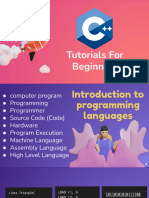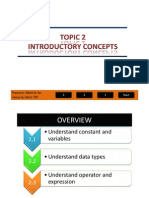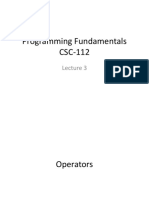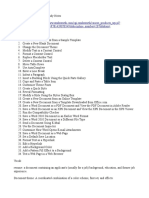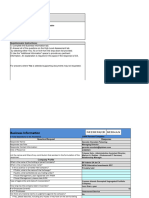0% found this document useful (0 votes)
5 views55 pagesIntroduction To Programming
The document serves as an introduction to programming, covering fundamental concepts such as compilers, data types, operators, and conditional statements, primarily using C++. It explains the differences between compilers and interpreters, the structure of Integrated Development Environments (IDEs), and the importance of C++ in building a strong foundation in computer science. Additionally, it includes examples and quizzes to reinforce understanding of programming syntax and logic.
Uploaded by
Stanzin ChinsalCopyright
© © All Rights Reserved
We take content rights seriously. If you suspect this is your content, claim it here.
Available Formats
Download as PDF, TXT or read online on Scribd
0% found this document useful (0 votes)
5 views55 pagesIntroduction To Programming
The document serves as an introduction to programming, covering fundamental concepts such as compilers, data types, operators, and conditional statements, primarily using C++. It explains the differences between compilers and interpreters, the structure of Integrated Development Environments (IDEs), and the importance of C++ in building a strong foundation in computer science. Additionally, it includes examples and quizzes to reinforce understanding of programming syntax and logic.
Uploaded by
Stanzin ChinsalCopyright
© © All Rights Reserved
We take content rights seriously. If you suspect this is your content, claim it here.
Available Formats
Download as PDF, TXT or read online on Scribd
/ 55










